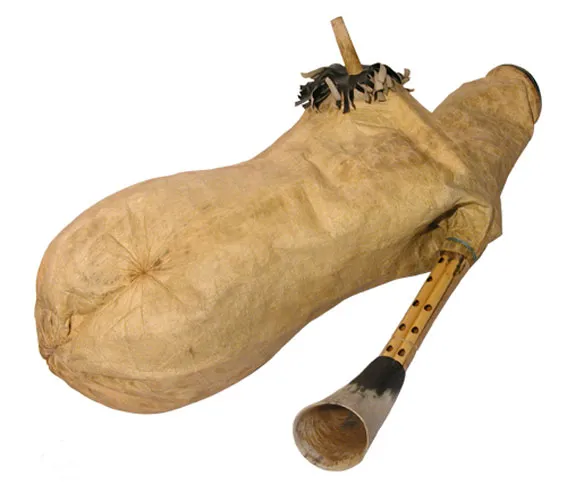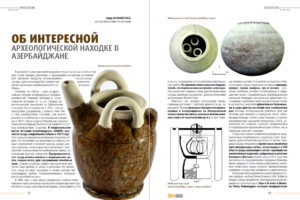Tokyo, 26 October, /AJMEDIA/
The Tulum is one of the famous wind instruments in the Azerbaijani and Turkish folk traditions that can be aptly compared to the Scottish bagpipe.
It is also a leather wind instrument that used to be quite widespread in Azerbaijan, mainly in Karabakh, Lachin, Gazakh, Tovuz and Nakhchivan. Now it can be found mainly in the Nakhchivan Autonomous Republic.
Just like the other wind instruments, the tulum dates to ancient times.
Scholars attribute the tulum’s appearance to the beginning of class society. A number of versions of this instrument were widely used under various names by the peoples of the Caucasus and by some nations in the West.
The tulum was especially popular among nomadic tribes engaged in cattle and sheep-herding.
With a timbre that is similar to that of the zurna, the musical instrument is also called a “tulum zurna”. The tulum is made of goatskin or sheepskin that has been tanned and softened in a special way. The skin is stripped from the animal as a whole piece. The skin of two legs is tied together. One of the other two leg parts is used for filling the instrument with air by means of an attached pipe, made of bone or reed, with a plug in the mouth. A pair of tubes are attached to the other leg part.
The tubes, which are used for playing the instrument, are 260-280 mm and have seven apertures.
The player holds the instrument under the left elbow, then slightly presses the bag filled with air and forces the air to pass through the tubes. By opening and closing the apertures with the fingers of both hands, he produces sounds of the desired pitch. The first tube is used for producing the melody, and the second one is for holding the tonic (keynote).
Tulum and the Scottish bagpipe are regarded as similar because they share certain characteristics. For instance, they both are wind instruments that have blow sticks; the pipe used to blow air inside the sack. The latter is another commonality between the two and, in both cases, animal skin is traditionally used to manufacture it. The sack is the central part of the instrument.
The most prominent difference between the two objects is the drone. Some readers might not know what these are, as the Tulum does not have them. Instead, its Scottish relative has not one, not two, but three drones! These are reeds that do not have finger holes and are not controlled in any way by who is playing the bagpipe. They produce a sort of humming sound as the artist applies pressure to the sack. These distinguish the traditional Scottish bagpipe from the other as they give depth to its sound. Instead, the Turkish Tulum’s sound is very high pitched and strong.









































